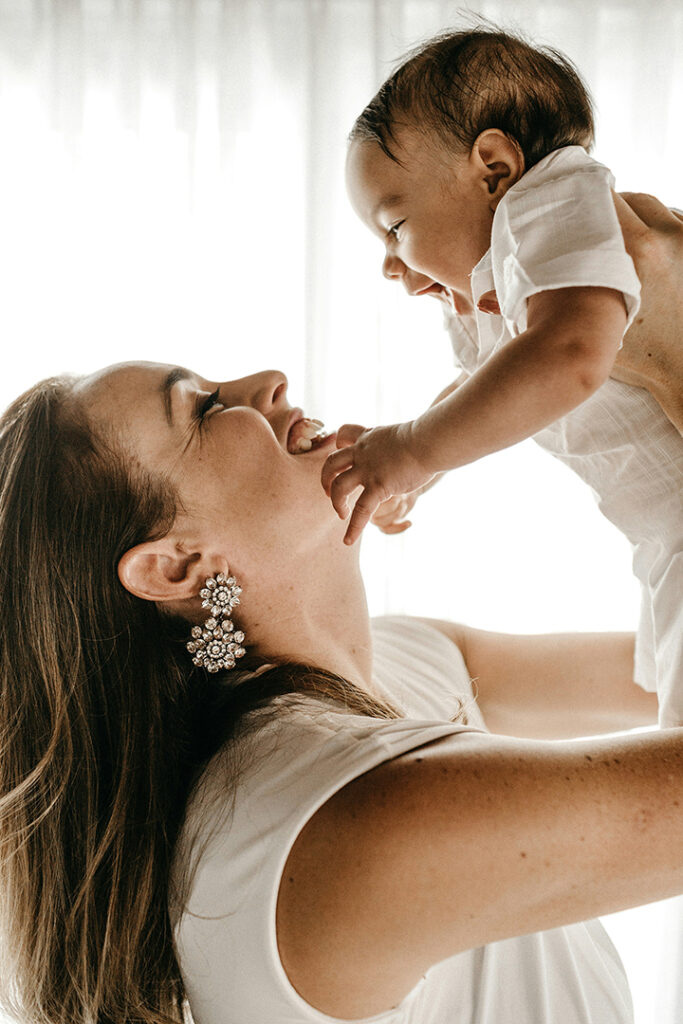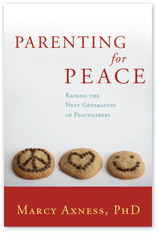 I write a lot about the central role of healthy attachment for child wellbeing. But what IS attachment and how do you get it?? It can be easy for someone like me who is steeped daily in the topic to take it for granted that people know what we mean when we say “attachment.” And as developmental psychologist author Gordon Neufeld has pointed out, attachment is not an intuitive word — in other words a word whose meaning is naturally and easily understood.
I write a lot about the central role of healthy attachment for child wellbeing. But what IS attachment and how do you get it?? It can be easy for someone like me who is steeped daily in the topic to take it for granted that people know what we mean when we say “attachment.” And as developmental psychologist author Gordon Neufeld has pointed out, attachment is not an intuitive word — in other words a word whose meaning is naturally and easily understood.
Author of an excellent book on attachment, Hold On to Your Kids, Neufeld points out that the word attachment was invented as a way to have a term to unify a science around. (The scientific study of attachment began in the 1950s with John Bowlby’s landmark work.) To further complicate our popular understanding of the concept, the term “attachment parenting” was copyrighted by William Sears. “So,” notes Neufeld, “now people know it as associated with a particular organization and particular strategies.” (Neufeld avoids using the term.)
I often refer to attachment simply as connection. Neufeld suggests that if we simply think of it as relationship, some of the puzzlement about attachment could be avoided. We intuitively know, for example, when relationships with friends or new romantic partners are in good shape (i.e. there is “healthy attachment”): it feels good to be together, they like being in our company, they seek us out, they value our opinion, we feel significant to them, we feel “seen” by them, and vice versa. We are equipped with internal gauges for assessing the quality of our relationships (i.e., attachment). Somehow this intuitive sense regarding healthy attachment with our children has been eroded.
What Is Attachment?
Within the human organism, attachment universal: a need to be connected. A baby’s need to be physically close to a predictable, caring adult is rooted in the biological drive for survival: millennia ago an infant too far away from an adult risked starving or being devoured by predators. But our understanding of the attachment has evolved and we now see that it is lifelong. Says Neufeld, “Our pursuit of proximity, contact and closeness is a huge need that is through the lifespan. To look for love, to be known, to be understood — these are all aspects of attachment.”
Perhaps the most famous experiment in the science of attachment is the “Strange Situation,” developed by Mary Ainsworth as a way to assess the nature of a child’s attachment to his or her mother based on his behavior in a specific situation involving his mother’s brief absence. http://en.wikipedia.org/wiki/Mary_Ainsworth
Styles of Attachment
Securely attached
Insecurely attached
** Ambivalent
** Avoidant
** Disorganized/disoriented (also referred to as “Anxious”)Secure Attachment — Infants use caretakers as a secure base for exploration, both at home and in the Strange Situation. Securely attached infants explore freely in the caretaker’s presence, check on her periodically, and restrict their activities in her absence. These infants exhibit varying degrees of stress during caretaker absence, but quickly revert to exploration following her return.
Avoidant Attachment — Infants explore but display little interest in their caretaker’s whereabouts and exhibit only slight distress over her departure. They tend to “snub” or ignore her upon her return.
Ambivalent/Resistant Attachment — These infants exhibit extreme distress when separated from their caretakers and display impoverished activity during their absence. When the caretaker returns, they immediate contact. However, they do not settle down easily or return to exploratory play.
Disorganized/Disoriented (Anxious) Attachment — Infants with this organization scheme do not appear to have any strategy for coping with caretaker absence or return. Often they will not even approach the caretaker upon her return, as if they are either frightened or confused.
Interestingly, the amount of distress shown by an infant during the mother’s absence (previously considered to reflect the strength of infant-caretaker relationships) is not related to security of attachment. Infants in each of the four attachment categories exhibited a range from mild to extreme distress during separation. The defining factors in the quality of attachment are the infant’s behaviors toward the caretaker prior to her absence and following her return.
The new science of interpersonal neurobiology has exploded our understanding of attachment. Far beyond physical safety, it fulfills a far more complex evolutionary requirement: to develop a suite of psychosocial competencies fundamental to the survival of not just each individual, but of our human family and our shared home, the planet earth.
How Do You Get Attachment?
As social primates, we are wired to be in relationship. We are designed to behave in ways that foster healthy (secure) attachment. Influences from the outside can get in the way to disrupt the process — misguided “expert” advice, mores and messages from popular culture, family or peer pressure, wounding from our own childhoods — the list is long. (With Parenting for Peace I share Neufeld’s aim: to be “the different parent expert, the book that’s different from all the others, because it’s to restore parents to their natural intuition rather than tell them what to do.”)
Indeed, with so many of my coaching clients I have found one of my overarching tasks is to simply affirm and support them in following their natural inclinations. A mother’s and father’s natural instincts — once those contrary cultural messages are quieted — is to do those things that indeed foster close relationship and thereby healthy attachment:
 stay physically and “relationally” close to your infant, because he needs your presence to help him internally regulate his states (distress, hunger, overstimulation, tiredness, etc.)
stay physically and “relationally” close to your infant, because he needs your presence to help him internally regulate his states (distress, hunger, overstimulation, tiredness, etc.)- respond to your infant in a timely, attuned way (i.e., respond to hunger cues by feeding, rather than a diaper change; respond to cues of tiredness by soothing to sleep rather than by stimulating play)
- engage in pleasurable, playful skin-to-skin, eye-to-eye and voice-to-voice contact: have a “falling in love” experience, as Connie Lillas terms it
- as per psychologist John Breeding’s vivid prescription: embrace your children with “eyes of delight.”
- As your child grows, be the calm, loving authority your child is biologically wired to need! (Or as Neufeld puts it, “be your child’s answer.”)
Simply put, to cultivate healthy attachment, be present. Connect. Play. Be a home base. Be a safe place. Really see your child.
When you are responsively attuned and connected, you communicate to your child, “I see all of you, even on the inside.” And more than that, “I share what you’re experiencing.” Daniel Siegel, a pioneer of attachment neurobiology, distills healthy attachment into the rather lyrical notion of feeling felt.
The early experience of feeling felt by an attachment figure is a foundation for the child’s developing capacities for empathy, compassion and true intimacy. Thus, healthy attachment is a foundation for peace that ripples out into a world that so desperately needs peacemakers.
_____________________
Coming up next: who is responsible for fostering attachment?
My one caveat about Gordon Neufeld’s comments in some clips is that his wording makes it sound as if it is the child’s failure when he is not in “right relationship” to his parents. I doubt he really means it this way, and I am a huge fan of his. (When I meet parents of tweens or teens, I prescribe his book even before my own!) This tendency to label the child when attachment is disrupted, and how we might look at attachment challenges in a more compassionate, helpful way, is what I’ll discuss next time…
Images
Jonathan Borba on Unsplash
Kadyn Pierce on Unsplash
Tags: attachment, attachment neurobiology, attachment parenting, Gordon Neufeld, interpersonal neurobiology, Mary Ainsworth, relationship


